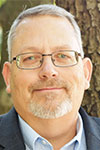July 2019 Vol.74 No. 7
Editor's Log
HDD Reunion

In the “good old summertime,” family reunions abound. Meeting at a park, campground or Grandma’s house, Great Uncle Fred enthralls us with tales from the “old days” and Aunt Betty passes on family cooking secrets. Brothers and sisters, scattered across the globe by profession and marriage, renew sibling relationships. Cousins meet – sometimes for the first time. Memories flow, laughter erupts and tears fall for those relatives who have passed.
Family reunions are a tradition that I, for one, hope never fade away in this modern, hyper-paced world within the digital universe. Sure, keeping up with someone on Facebook is a great option, but it can’t come close to duplicating the rush of face-to-face, hugs and handshakes type of contact where kinship is reestablished.
That family atmosphere abounds within the horizontal directional drilling industry. It started slowly with the concept being explored in the 1960s by Dick Melsheimer for small, electric-line installation, and made practical for large applications through efforts led by Martin Cherrington. By the late 1980s, HDD was established as a technology and gaining steam. Growing demand from electric, gas distribution and steadily increasing telecommunications work led to development of small rigs and the industry was off and running by the early ’90s, and rapidly became essentially a Wild West environment.
The Underground Construction Technology International Conference & Exhibition was ground-zero for the explosive boom time of early HDD. All kinds of educational sessions and workshops were key in informing, educating and facilitating knowledge and technology. The exhibit hall was filled with the latest and greatest equipment and technology. UCT was the go-to event for HDD.
There was a major hic-up, particularly for the small rig market, when the fiber trunkline work imploded in 2001. But the industry has since survived, thrived and expanded exponentially into all markets with all sizes of rigs.
HDD is firmly established in virtually every facet of underground infrastructure construction. Warm relationships, built through the challenges of design, execution, soil conditions, severe weather, successes and failure, build bonds that can never be properly realized via pixels.
For the increasing numbers of personnel who have found long careers in the HDD market, it has become a way of life. Over the last 50 years, this family of HDD now has second and even third generations finding a rewarding livelihood in the market.
While this has historically been a tight-knit community, diversification with many new faces entering the field every day, makes it tougher to stay in touch. With that perspective, industry minds decided it was high time for an HDD reunion to be held at the historical focal point of HDD education, technology and networking, UCT. No matter if you operate a million-pound rig or a small machine, whether you are long-since retired or a recent entry into the market, this is an event that honors the HDD industry.
The short list of activities currently planned include a special party and reception, expanded and broad-based educational curriculum, and both established and new companies on the exhibit floor. Companies are excited about the prospect of catching up with long-term customers and forgotten friends, and networking with the wave of new contractors who will be attending. We’re also pleased to announce the establishment of an HDD Hall of Fame.
I can’t wait to become re-acquainted with all my old friends, while welcoming the multitude of new personnel to this unique, fun and rewarding event. We’ll be announcing details and registration information soon, but for now, mark your calendars to attend the first-ever HDD Reunion in Fort Worth next January in conjunction with UCT.
Can’t slow rehab
Also, in this issue is our annual guide to all kinds of rehabilitation technologies and various specs. This special section features the principal players in the rehab marketplace.
We’ve been producing this special section for some time, and each year it expands, paralleling the steady growth of the market itself. For example, it wasn’t long ago that we had very little mention of water rehabilitation methods in the Rehab Tech Guide. Today, water rehab has exploded with many options.
Historically, much of our rehabilitation technology has its origins in Europe, where the need to maintain or replace centuries-old systems is extreme. As North American systems are overloaded, it is no surprise that European technology migrates across the Atlantic and finds a new home in America. Of course, as we American and Canadians have a way of doing, we take that tech and rapidly adjust it to our needs.
Ultra violet, cured-in-place technology is also coming of age. It was a concept many years ago that faded out of the North American market as impractical and too expensive, only to return in force and rapidly expand with many companies now offering the method. It’s a great example of just how robust the rehab market has become. •




Comments